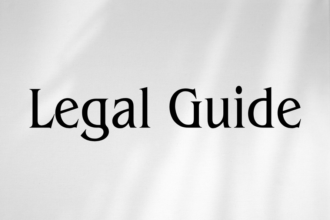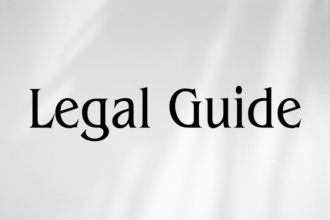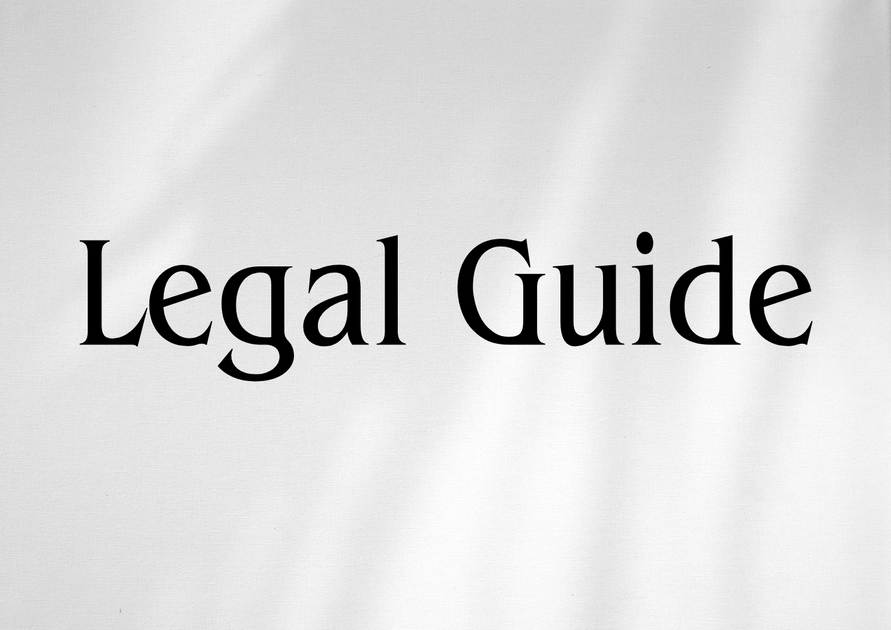Introduction: The Strategic Importance of Saudi Aviation Law and Its Alignment with ICAO for the UAE
In an era where global mobility, investment, and collaboration hinge on a unified and secure aviation environment, the development and modernization of Saudi Arabia’s aviation laws are of critical interest—not just to stakeholders within the Kingdom, but also to neighboring Gulf states such as the United Arab Emirates (UAE). As Saudi Arabia aligns its regulatory framework with the International Civil Aviation Organization (ICAO) standards, the ramifications are significant for airlines, aircraft lessors, multinational corporations, legal practitioners, and government regulators operating across the GCC. UAE businesses and legal advisors, in particular, must closely monitor these developments to ensure legal compliance, manage cross-border risk, and seize new opportunities as the regulatory landscape evolves, especially considering the UAE’s ongoing push for legal system modernization in line with Vision 2030 and the latest 2025 legislative updates.
This article delivers an in-depth professional analysis of how Saudi aviation law is integrating ICAO and other international standards, contextualizing the legal and operational implications for UAE-based organizations. We examine the structure and content of these reforms, compare previous frameworks to newer iterations, provide practical consultancy guidance, and outline strategies for compliance and risk management within a cross-border GCC context. This analysis draws on recent updates from the UAE Ministry of Justice, UAE Government Portal, and the Federal Legal Gazette, underlining the interconnectedness of GCC aviation regulations and the UAE’s ambition to sustain its status as a global aviation hub.
Table of Contents
- Overview of Saudi Aviation Law and Its Reform Trajectory
- ICAO Standards and International Civil Aviation Law: The Global Framework
- How Saudi Aviation Law Aligns with ICAO and International Standards
- Practical Implications and Opportunities for UAE-Based Stakeholders
- Comparative Analysis: Old vs. New Saudi Aviation Law
- Case Studies and Hypothetical Scenarios
- Compliance Risks and Strategic Recommendations for UAE Organizations
- Conclusion and Forward-Looking Strategies for UAE Enterprises
Overview of Saudi Aviation Law and Its Reform Trajectory
The Legal Foundation and Regulatory Authorities
Saudi Arabia regulates civil aviation through a framework historically centered on the Civil Aviation Law (Royal Decree No. M/44 of 2005), administered by the General Authority of Civil Aviation (GACA). Recent years have witnessed a concerted effort by Saudi authorities to revamp this framework, introducing new executive regulations and decrees to support Vision 2030 and to strengthen compliance with evolving international norms.
Key Legal Instruments Shaping Current Regulatory Practice
- Civil Aviation Law (M/44 of 2005): The original foundation for aviation regulation, covering licensing, airworthiness, safety, and economic matters.
- GACA Executive Regulations: Comprehensive updates over the past decade, including new safety, security, air navigation, and consumer rights regulations in force after 2020.
- Recent Initiatives: Saudi Vision 2030 has spurred adoption of new frameworks for environmental sustainability, digital transformation, and privatization of airports and carriers. These are increasingly integrated with ICAO and other global best practices.
Sectoral Scope and Geographic Reach
The Saudi aviation laws encompass not only domestic air operations but also international overflights, bilateral agreements, and regulatory obligations for all carriers operating in, into, or over Saudi territory. Given the interwoven nature of GCC airspace and the existence of open skies agreements, these laws have direct and indirect implications for UAE airlines, service providers, and lessors engaged in cross-border operations.
ICAO Standards and International Civil Aviation Law: The Global Framework
Understanding ICAO’s Legal Role
The International Civil Aviation Organization (ICAO) is a United Nations specialized agency responsible for fostering safe, secure, and orderly development of global civil aviation. Through its Chicago Convention (1944) and subsequent Annexes, ICAO sets forth internationally recognized standards and recommended practices (SARPs) touching on all facets of aviation—from safety management and security protocols to licensing, environmental protection, and air traffic services.
Key ICAO Instruments and Obligations
- The Chicago Convention (1944): Core legal document binding contracting states (including Saudi Arabia and the UAE) to implement SARPs and ensure that domestic laws are harmonized with international standards.
- Annexes to the Chicago Convention: Seventeen critical Annexes, notably:
- Annex 1: Personnel Licensing
- Annex 6: Operation of Aircraft
- Annex 17: Security
- Annex 19: Safety Management
- Annex 16: Environmental Protection
- ICAO Compliance Audits: ICAO periodically assesses state compliance and provides recommendations for reform and technical assistance.
Why ICAO Alignment Matters in the GCC Context
Alignment with ICAO standards is not merely a technical obligation. For Saudi Arabia and the UAE, it unlocks:
- Assurance of mutual recognition for carrier licenses and certifications;
- Eligibility for international codeshare and traffic rights;
- Risk mitigation for international liability and insurance;
- Facilitation of border security, customs, and passenger processing;
- Investment attraction by signaling regulatory predictability;
Thus, the recent modernization spree in Saudi aviation law holds reverberating consequences for UAE interests, particularly those involving cross-GCC undertakings.
How Saudi Aviation Law Aligns with ICAO and International Standards
The Evolution of Saudi Compliance: Processes and Priorities
Saudi Arabia’s push for regulatory transformation in its aviation sector is structured around the principle of “mirrored compliance” with ICAO SARPs—meaning domestic regulations are designed to reflect and, where relevant, exceed the standards articulated by ICAO. Compliance initiatives typically unfold in three phases:
| Phase | Key Actions | Legal Reference |
|---|---|---|
| 1. Gap Analysis | Legal review against ICAO SARPs, consultation with stakeholders | GACA Circulars, Executive Regulations |
| 2. Legislative Drafting | Amendment or replacement of decrees/rules, public consultation | Royal Decrees, GACA Board Resolutions |
| 3. Implementation & Oversight | Training, audits, reporting, ICAO engagement | GACA Implementation Plans, ICAO Audit Reports |
Recent Key Areas of Alignment
Reform areas where Saudi law now closely tracks ICAO standards include:
- Safety Management Systems (SMS): Adoption of ICAO Annex 19 requirements in all commercial operations and regulated facilities.
- Security and Counter-Terrorism: Enhanced airport screening, crew vetting, and data exchange consistent with Annex 17.
- Personnel Licensing: Training and certification harmonized with Annex 1 and internationally recognized standards.
- Environmental Regulation: Fuel efficiency mandates and emissions reporting in line with ICAO’s CORSIA (Carbon Offsetting and Reduction Scheme for International Aviation).
- Consumer and Passenger Rights: Regulations modeled on ICAO’s Passenger Rights Guidelines and best practice from the European Union.
Legislative Instruments Cited in Alignment
- GACA Executive Regulations on Safety Management (2021): Mandates SMS for all commercial operators and airports.
- Royal Decree No. M/44 (as amended 2020–2022): Updated to mandate compliance with all binding ICAO SARPs.
- GACA Circular 30/2022: Implementation of CORSIA environmental requirements.
Practical Implications and Opportunities for UAE-Based Stakeholders
Commercial Airlines and Private Operators
For UAE carriers and operators, the alignment of Saudi law with ICAO means greater predictability in cross-border operations. Mutual recognition of licenses, harmonized operational standards, and reduced risk of regulatory “double jeopardy” for non-compliance are tangible commercial benefits. Additionally:
- Route Access: Airlines can more reliably enter or expand in Saudi markets, leveraging open skies outcomes and joint ICAO-GCC initiatives.
- Codeshare Arrangements: Aligned standards support seamless codeshare and wet-lease relationships, mitigating legal and insurance risk.
Aircraft Lessors, Financiers, and Investors
Legal certainty around aircraft registration, lien enforcement, and repossession is significantly improved when both countries align with ICAO’s Cape Town Convention protocols. UAE-based lessors and banks benefit from a harmonized regime vis-à-vis Saudi lessees, enhancing collateral value and reducing enforcement delay in the event of borrower default.
Ground Handling, MRO, and Airport Services
Unified safety and security requirements allow UAE-based ground handlers and maintenance providers to expand into Saudi airports without redundant certification processes.
Compliance Table: ICAO-Driven Opportunities for UAE Businesses
| Area | Previous Challenge | Post-Alignment Opportunity |
|---|---|---|
| Licensing | Duplicative processes, inconsistent standards | Mutual recognition, streamlined approvals |
| Insurance | Ambiguous liability rules | Clarity via harmonized standards, lower premiums |
| Cross-border Dispute Resolution | Forum selection risk, slow enforcement | Standard clauses and expedited process |
| Environmental Compliance | Varying emissions norms | Unified CORSIA requirements, predictability |
Comparative Analysis: Old vs. New Saudi Aviation Law
Side-by-Side Comparison Table
| Subject | Pre-2020 Law | Post-2020 Reforms |
|---|---|---|
| Operator Certification | Domestic focus, national certification only | Recognition of ICAO-compliant foreign certificates |
| Safety Management | Prescriptive rules, case-by-case approvals | Mandatory SMS across all operations (ICAO Annex 19 aligned) |
| Passenger Rights | No unified standard | Codified passenger compensation, clear complaints handling |
| Aircraft Registration | Limited transparency, high documentation | Digital registry, Cape Town Convention standards integrated |
| Environmental Policy | No emissions regulation | CORSIA and ICAO Annex 16 compliance |
| Enforcement Powers | GACA discretion, fines only | Tiered penalties, public transparency, ICAO audit reporting |
Visuals Suggestion
Visual: Flow Diagram—Regulatory Approval Process Pre- and Post-Alignment
Caption: “How regulatory approvals for UAE-Saudi routes have shifted with legal reforms.”
Case Studies and Hypothetical Scenarios
Case Study 1: Emirates Group Establishing Automated Handling in Riyadh
Situation: Emirates Group seeks to launch an automated baggage handling system in Riyadh, drawing on systems tested and approved in Dubai.
Old Regime: Required separate Saudi certification, local testing, and extensive documentation, causing commercial delays.
Under New Alignment: GACA accepts evidence of ICAO-compliant certification from UAE, permitting conditional approval after local audit, reducing time-to-market by 6–9 months.
Case Study 2: Aircraft Lessor Seeking Repossession Post-Breach
Situation: A Dubai-based lessor faces lessee default on a Saudi-registered aircraft.
Old Regime: Ad hoc court proceedings, limited predictability on enforcement, and retention delays.
Under Post-Alignment Law: GACA applies Cape Town Convention protocol, recognizing priority rights and streamlining repossession subject to ICAO-endorsed due process (typically within 2–3 months).
Risk Table: Non-Compliance Scenarios
| Scenario | Legal Consequence | Recommended Response |
|---|---|---|
| Operator fails to implement SMS | Fines, suspension of license | Immediate SMS implementation, root cause audit |
| Non-ICAO compliant licensing | Denial of entry for flights, insurance risk | Update personnel training and certification |
| Late emissions reporting | CORSIA penalties, international censure | Automate environmental reporting systems |
Compliance Risks and Strategic Recommendations for UAE Organizations
Key Risks in the New Regime
- Dynamic Regulatory Baseline: Saudi (and UAE) aviation laws are subject to frequent updates, creating risk of inadvertent non-compliance if organizations rely on outdated manuals or prior certifications.
- Documentation and Record Keeping: Insufficient documentation of ICAO-compliance can undermine defense in regulatory investigations.
- Cross-Border Disputes: Despite harmonized laws, jurisdictional ambiguities may persist in contractual or insurance disputes.
Strategic Compliance Guidance
- Engage in quarterly or biannual compliance audits referencing latest GACA and ICAO circulars, especially prior to launch of new routes or major projects.
- Implement training programs to ensure operational and legal staff are abreast of harmonized requirements.
- Adopt digital compliance management systems to track permits, certifications, emissions, and enforcement deadlines.
- Ensure cross-border agreements include updated ICAO-compliant regulatory language and clear dispute resolution clauses referencing mutually recognized forums.
- Leverage professional legal support to navigate rapid regulatory change and support self-reporting mechanisms.
Compliance Checklist Visual Suggestion
Visual: Compliance Checklist Table for UAE Operators Entering Saudi Market
Caption: “Critical checkpoints for legal and operational readiness in the Saudi-UAE aviation corridor.”
Conclusion and Forward-Looking Strategies for UAE Enterprises
The strategic realignment of Saudi aviation law with ICAO and international standards has introduced a new era of legal certainty, cross-border interoperability, and investment opportunity across the GCC. For UAE-based stakeholders, this is both a challenge and a prospect: While compliance costs and exposure to unfamiliar enforcement regimes may rise, the benefits—seamless market entry, strengthened risk management, and enhanced reputation—are clear and compelling.
Several trends will shape the years ahead:
- Ongoing Legal Updates: Saudi Arabia, in tandem with the UAE’s own 2025 legal reforms, will continue to update aviation rules—requiring agile compliance functions in all GCC-facing organizations.
- Digital Transformation: Harmonization will increasingly rely on centralized digital registries and reporting, streamlining operations but demanding investment in technology and cybersecurity.
- Focus on Sustainability: Environmental regulation will tighten, with ICAO’s CORSIA and related tools setting a minimum compliance baseline.
- Integrated Dispute Resolution: Contracts and insurance arrangements should proactively reflect the evolving legal landscape to prevent cross-border bottlenecks.
For UAE enterprises—from airlines and lessors to consultants and investors—the takeaway is clear: Regularly review and update your compliance strategy, monitor cross-border legal updates using reputable sources (UAE Federal Legal Gazette, GACA, ICAO notices), and engage professional legal counsel specialized in GCC aviation law. Doing so ensures operational excellence, resilience to regulatory shocks, and maximized opportunity in the region’s rapidly evolving aviation landscape.




